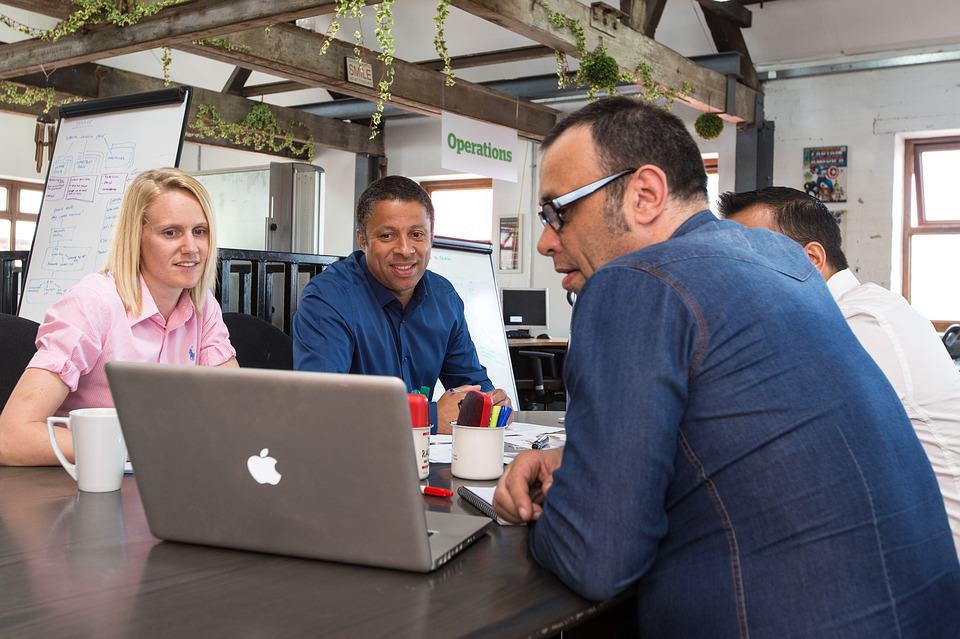
Changing “the way things are done” at a nonprofit is always tough at first.
And transitioning your auction event from pen-and-paper to online bidding can be an undertaking: you have to sell it to your board, teach guests about the new technology, and ensure your venue is ready and prepared for the big leap.
But we’re here to walk you through the whole process, so you can approach this fun new endeavor with purpose and with a game plan—and hopefully make the transition into this revolutionary new technology as easy as possible.
Your auction, and your guests, will thank you!
So how do you convince your board that online bidding is the right move for your annual event?
Come to your meeting prepared.
Before you even set a meeting time with your board, sit down and brainstorm with your development team all the pros and cons to adopting online bidding you can think of.
Do the research ahead of time—talk with potential vendors, assess the costs and risks, and know the options for packages and prices. Try to anticipate what questions your board will ask, and come prepared with thoughtful answers.
While you’re at it, it’s not a bad idea to make a strong, cohesive presentation to go with your pitch. Outline everything you’ve learned so far about the benefits of adding online bidding, what changes you’ll need to make organizationally to adapt, and what budget you’ll need to make it a reality.
The key to getting your board on board with online bidding? A killer hook.
A “hook” is an opener that immediately grabs your audience’s attention—in this case, your board. What benefit of adopting online bidding will speak to your board the most? What specific problems from last year can you fix by switching over?
Here are some possible hooks to give you ideas:
- Raising more money! Online bidding gets more competitive than pen-and-paper, it gives you the option to open bidding early, and taking away paper bid sheets creates more space for featuring even more profitable auction items.
- Online bidding is a cutting edge technology that makes your nonprofit look innovative and tech-savvy.
- Automation cuts down on data entry event night, and by extension the risk of human error, freeing up everyone to do more fundraising. No more Excel spreadsheets or convoluted processes for staff to learn.
- Drive up the hype for your event with online bidding—start the bidding higher and build excitement in your audience by showing them auction items early, and increase overall engagement throughout the event.
- A smoother, faster guest experience means happier guests, more money raised, and greater guest loyalty.
Present online bidding as part of a greater strategy or vision.
Sometimes it’s scary (and reeks of “buzzword”) to start off by saying, “We’ve got a new strategy plan!” But online bidding really is part of a greater strategic idea: abandoning pen-and-paper bidding, anachronistic Excel spreadsheets, long registration lines, and wait times at check-out in favor of something more streamlined and modern. It’s a brave new world out there with auction technology—so why shouldn’t your event, your budget, and your staff benefit from those advances?
If you’re already taking donations online, sending e-mail blasts, and tracking your donor base with sophisticated software, adding an online component to your auction is a straightforward next step. Even though it’s state-of-the-art now, soon guests will be expecting online bidding at auction events, and organizations without it will look like they’re living in the past.
Be up front with your board about the costs and the risks.
Yes, adopting an online bidding solution is a new cost to factor into an already-tight auction budget. But it’s a cost that can be offset.
- Suggest recruiting a sponsor specifically for the online bidding component.
- Many nonprofits who switched to online bidding experienced a significant increase in fundraising, such as Holy Trinity Catholic School, who brought in an additional $13,000 that more than covered the cost of adding the online bidding solution.
- Automated bidding leads to more competitive bidding, more time for bidding, and more engagement among bidders—leading to higher auction revenue. Online bidding is great at paying for itself.
There are additional costs associated with the transition to online bidding, and it’s important to be up front and honest with your board about them—and to propose creative solutions. Here are just some examples of costs to consider:
- Having spare devices (such as tablets) around for guests who didn’t bring a bidding-capable device to the event.
- Recruiting and training tech-savvy volunteers to troubleshoot issues and help guests with bidding on their device.
- Setting up a “juice bar” for guests to charge up their devices.
- Online bidding requires more data entry in advance of the event—the trade-off being that data entry isn’t required on the night of, freeing you up to mingle with guests and raise more funds.
- Requires good wi-fi and/or cell service at the venue that’s able to handle a high volume of traffic at once.
- Transparency an daccountablity about the costs of adoption are key to building trust into the conversation with your board
Get them involved.
Let your board be involved in the decision-making process! Come to the presentation with some possible vendors and marketing plans, and present the costs and benefits of each. Employ board members in soliciting a sponsor to cover the cost of online bidding. They’ll be more likely to approve your idea if they get some agency in the execution.
And last, but not least, be sure to follow up. After you present, thank them for listening—no matter their decision. Make sure you get an answer promptly, though, so you can start working on implementation.
Even if it’s not approved this year, you have a whole other year ahead of you to amass more evidence as to why your nonprofit needs an online bidding component.
